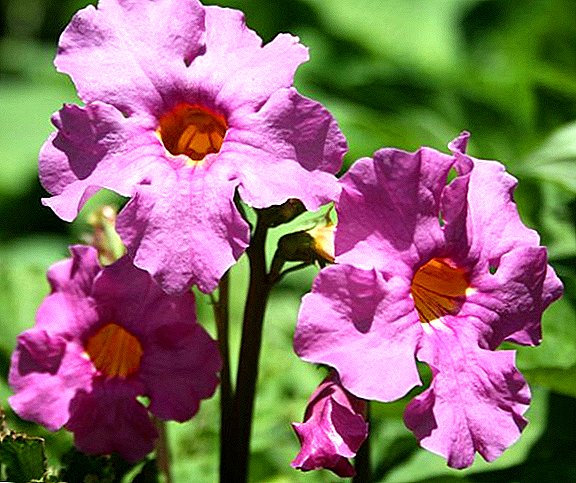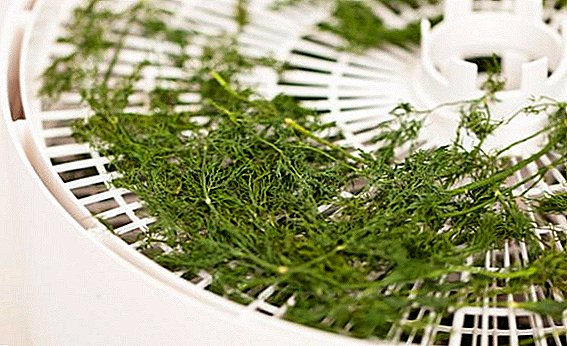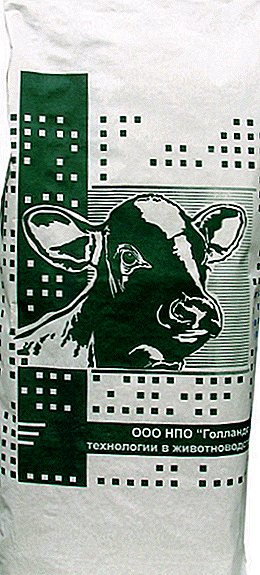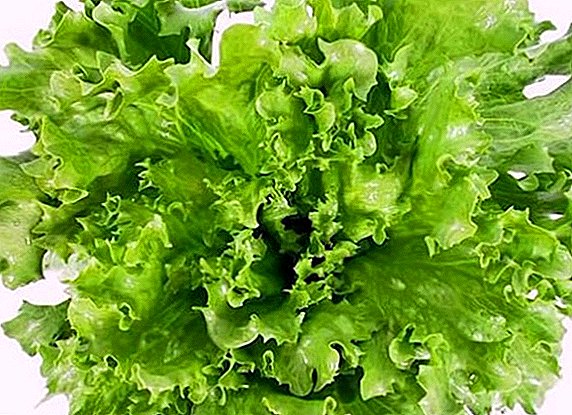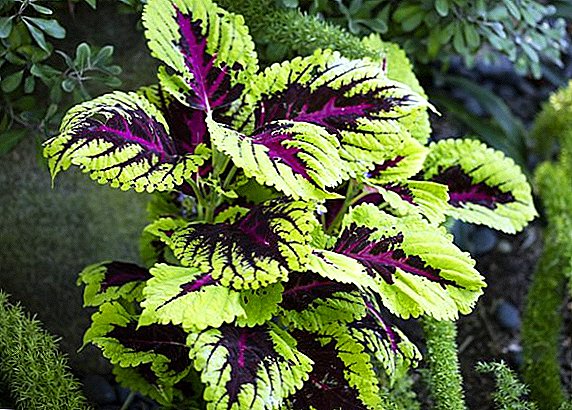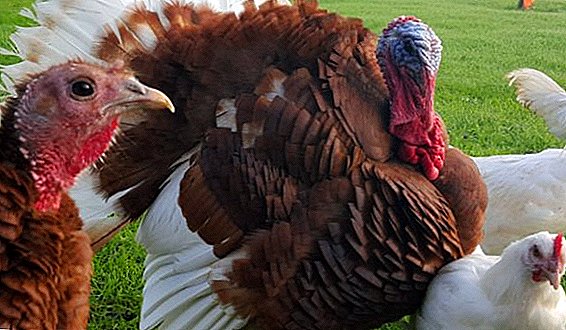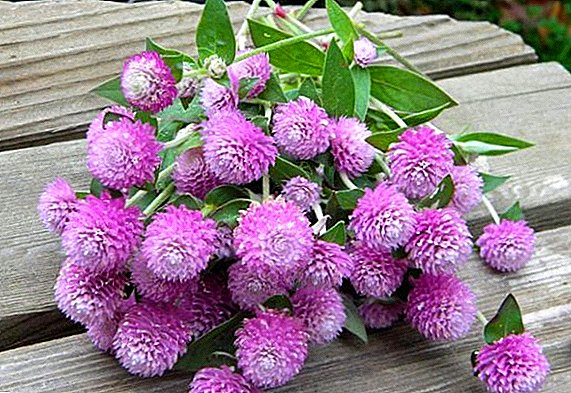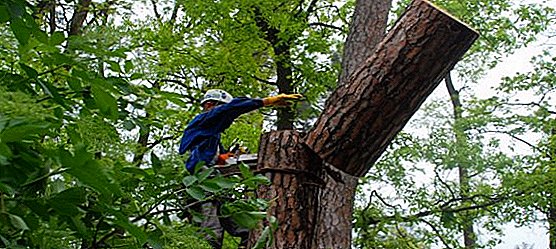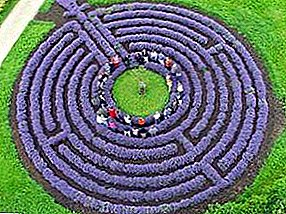
Lavender fields have an incredible appeal. Rich lilac color and no less saturated aroma of lavender are able to deliver real pleasure.
Even if you can not plant a whole lavender field, it is quite possible for you to use this plant in the alpine slide space, near the borders or in other variants.
 In general, lavender is quite a convenient plant to grow in the country or in their own garden.
In general, lavender is quite a convenient plant to grow in the country or in their own garden.
You just need to know some of the features and be able to correctly dispose of this plant.
For example, if the weather is mostly cold, you can easily use portable pots and pots..
There, lavender will feel great, and you will be able to transfer the plant to more comfortable conditions during a cold snap.
Of course, in addition to this, it will be necessary and regularly takes care of lavender, but again, if you know what exactly you should do and the characteristics of the plant, lavender will be able to please you with its magnificent appearance.
Landing spot
Perhaps it is one of the most significant parameters. After all, if you choose a shadow space, then there will be few flowers, and the flowering period is minimal. Under the rays of light, lavender opens and blooms for a long time, gives many flowers.
It is best to choose a fairly free open space, but you need to look not only at the situation above the ground, but also underground. If you are a happy owner of high-flowing groundwater, you should think about the artificial elevation for lavender or the drainage layer.
This plant does not tolerate swampy and waterlogged soil, by the way, flowerpots here can also be the best option.
When you make a lavender bed, use compost, which will increase the nutritional value of the soil and loosen the soil. If acidity prevails in the soil, it will be necessary to add some alkali, for example, wood ash, or lime.
Features of planting lavender
 In general, you have three options to get new lavender bushes:
In general, you have three options to get new lavender bushes:
- seeds - just buy seeds and grow according to the instructions;
- cutting - you cut a twig and put it in the soil mixture, moisten the soil (you can cover it with a film or make a “greenhouse” effect in a different way) and after the cutting has taken root, transplant to the desired location;
- cuttings - in spring, take the lower sprig and tilt to the ground, sprinkle the part closest to the ground, you can additionally fix the sprig, as a result a lump of roots will appear at contact with the ground, then cut the sprig from the main bush, sprinkle with crushed coal and plant the branches.
If we talk about adult bushes, they are not particularly transplanted. This is possible, but you need to act very carefully and take a large amount of land with roots.
Regarding the distance between the bushes there is a universal parameter - the maximum length of the bush. Take this length as the distance between neighboring bushes, if you want lavender to grow magnificently.
If you want a fence, then take a distance between the bushes in half the maximum length.
Sowing Lavender Seeds
Here you will need the so-called stratification, that is, artificial cooling. Most often, where the winters are harsh, for stratification they use aging in the refrigerator or on the balcony.
To do this, take seeds, mixed with sand, put in a container, wrapped in plastic and left for at least six weeks in the cold around -8 - 12 degrees.
It is necessary not to freeze the seeds. After that, you can plant lavender in boxes at the end of the winter, or in the spring in greenhouses and on the open ground. It is quite important to wait for the spring, because the longer the stratification is, the better.
If you live where the winters are not so severe, you can easily plant the seeds at the beginning of autumn. Some will winter and begin to grow, but this option is relevant only if you live in a warm climate zone.
Processing soil near the bushes
Watering is a very significant factor. The best is watering depending on the drying of the soil. When the soil is dry, you can water it again, but do not over-wet it.
In addition, loosening and weeding will be required, with regular. If you want to ease the task a little, use mulch from foliage, which will soften and loosen the soil, but you still need a little work. At the very bush the soil should not be covered with mulch, so that the roots do not rot, there will need to be a little weed.
Pruning lavender bushes
When the first spikelets withered, you need to make the first pruning of the twigs. Cut literally a couple of centimeters. Before the cold season, they cut a little more, but still not a lot.
In general, you should never cut the lavender to the woody part. This process as a whole has only decorative purposes; you form a beautiful bush shape. Therefore, in general, such an activity is optional, but if you want to have a beautiful plant, sometimes it is useful to trim lavender.
Fertilization
 Miraculous mulch will help you here too.
Miraculous mulch will help you here too.
If you especially do not want to spend time on fertilizing the bushes and have some foliage and compost, you can make a thick layer near the plants and the mulch will do the work for you.
Decomposing this layer will be able to provide all the necessary elements for plants.
In addition, you can take:
- mineral (complexes) fertilizers are the simplest of a flower shop, two spoons per bucket and watered around the perimeter before flowering;
- Nitrogen fertilizers - identical proportions, used only at the beginning of summer.
They will give the plant the necessary support, but in the presence of thick mulch, they are in fact not so relevant.
Preparing for the winter
Although lavender also enjoys warmth, experts say, the plant can tolerate periods of up to -25 degrees. The most significant negative factor here can only be winter with a minimum amount of snow, when soils freeze and frost are more noticeable for plants.
Anyway, it is useful for lavender to create additional weatherization if you intend to hibernate in the open field.
In order to level the possible absence of snow, use the branches of coniferous trees. Before this leafy mulch must be completely removed and a couple of floors of coniferous insulation are laid on the beds. In addition, before the winter should be cut a little twigs.
If your lavender lives in warm climatic zones, it may not be necessary to warm the beds. Often the plant tolerates wintering normally.
Types of lavender
 In fact, lavender flowers may have a different color.
In fact, lavender flowers may have a different color.
Much depends on the variety, although the most common is still the version with purple flowers.
There are two main groups of lavender:
- English
- French
The first option is the most unpretentious and is used for cultivation in open ground. Here the inflorescences are longer and the leaves are narrower.
The second option is mostly grown in pots, as from cold weather, French lavender freezes, the plant has shorter inflorescences and larger leaves, although in general it looks like an English lavender.


